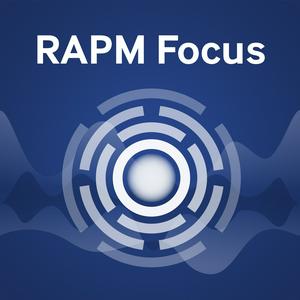Episode 36: Risk Factors for Persistent Postoperative Opioid Use: An Entity Distinct from Chronic Postsurgical Pain
Hosted by RAPM Editor Eric Schwenk, MD, this episode of RAPM Focus welcomes RAPM Associate Editor Mark Bicket, MD, PhD, and medical student Sama Ramo following the recent publication of their original research paper, “Risk Factors for Persistent Postoperative Opioid Use: An Entity Distinct from Chronic Postsurgical Pain,” included in the February 2025 special edition of RAPM, titled “Tackling the Challenge of Chronic Postsurgical Pain.”
Persistent postoperative opioid use results when patients continue to take prescription opioids well beyond the time their pain after surgery would be expected to resolve. In some cases, this is a couple days; in other cases, this is several weeks. There are many challenges associated with prescription opioid use, including the lack of a truly safe dose, so there is risk across the continuum. Patients facing persistent postoperative opioid use potentially confront worse outcomes, higher rates of health care utilization, and higher rates of mortality compared to patients not enduring persistent postoperative opioid use.
Dr. Mark Bicket is an associate professor of anesthesiology with tenure at the University of Michigan and a joint appointment in the Department of Health Management and Policy at the School of Public Health. Additionally, he is co-director of the Overdose Prevention Engagement Network (OPEN). A clinician-scientist and practicing physician anesthesiologist, Dr. Bicket has pioneered evidence-based approaches to reduce opioid-related harms and improve the treatment of persons who experience pain. He currently leads an NIH R01 study examining pain-related outcomes for persons with opioid use disorder who have surgery and serves as PI for two pragmatic trials funded by the Patient-Centered Outcomes Research Institute including the CARES study, an international randomized clinical trial examining commonly prescribed treatments for postoperative pain. He previously served on the National Academy of Medicine ad hoc committee on evidence for opioid prescribing guidelines in 2018-2019 and a workshop on opioid disposal in 2023. Dr. Bicket has advised the White House, FDA, CMS, state governments, and national organizations on pain and opioid issues. His research, which includes 120 peer-reviewed articles, has appeared in JAMA, NEJM, and BMJ, and has been supported by the Foundation for Anesthesia Education and Research (FAER), SAMHSA, and CDC.
Sama Ramo is a second-year medical student at Oakland University William Beaumont School of Medicine. She is a Foundation for Anesthesia Education and Research scholar.
*The purpose of this podcast is to educate and to inform. The content of this podcast does not constitute medical advice, and it is not intended to function as a substitute for a healthcare practitioner’s judgement, patient care, or treatment. The views expressed by contributors are those of the speakers. BMJ does not endorse any views or recommendations discussed or expressed on this podcast. Listeners should also be aware that professionals in the field may have different opinions. By listening to this podcast, listeners agree not to use its content as the basis for their own medical treatment or for the medical treatment of others.
Podcast and music produced by Dan Langa. Find us on X @RAPMOnline, Facebook @Regional Anesthesia & Pain Medicine, and Instagram @RAPM_Online.
